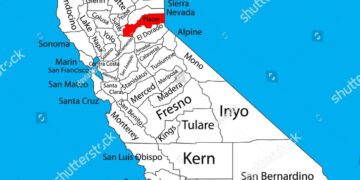Growing up in the Pakistan of 1980s, a time before Cartoon Network and HBO, one of my fondest childhood memories is Maa’a waking me up in the morning for school, just as Mustansar Hussain Tarar did the morning ‘Chacha gi’ show. At the conclusion of his show, PTV aired a much-awaited five-minute cartoon segment. And again, in the afternoon, just as the PTV transmission resumed (with tilawat-e-Quran), around 4 four p.m. was the airing of an extended thirty-minute cartoon fragment.
These brief moments on PTV, and the excitement around them, were the highlight of each school-going student in those days. My entire routine, and that of my siblings, revolved around these two cartoon segments. If you did not finish breakfast and drink your milk in full, you could not watch the morning cartoons. And if you had not completed the homework in time, you were barred from watching the afternoon segment.
The dominion of PTV over the daily routine, narrative and discourse of the citizenry, back then, was near absolute. Sunday mornings with ‘Sona Chandi’; Wednesday nights with ‘Andhera Ujala’; dinner at nine sharp, while watching the news; And if you stay up late enough, the conclusion of the transmission each day (after ‘Halat-e-Hazra’), at midnight, with the recitation of the national anthem!
Sadly, despite an illustrious sixty-year history, the present-day PTV has been reduced to a fraction of its past glory and credence. Especially since the emergence of private media houses in Pakistan – over the past decade and a half – PTV seems to have becomes entirely redundant. A media outlet without any viewership. A broadcaster whose opinion carries no weight in the national discourse. In the circumstances, it is pertinent to pause and review the distance travelled by this great national institution, the losses suffered, and the perils that still await its path.
The story of PTV started with humble beginnings, with a tent on the back lot of the Pakistan Broadcasting Corporation, in 1961 – originally as a privately owned television channel, under the stewardship of Syed Wajid Ali, in collaboration with a Japanese enterprise, Nippon Electric Company. Subsequently, on 26 November 1964, the then President Ayub Khan inaugurated Pakistan’s first official television station, which commenced broadcast from Lahore, followed by Dhaka (1965), Rawalpindi (1965), and Karachi (1966), and was incorporated, on 29 May 1967, as the “Pakistan Television Corporation”, under the Company Act, 1913.
In 1971, as part of the nationalisation program, PTV was brought completely under the ownership and management of the government. Through successive policies introduced during the 70s, the news reporting and cultural ambit of PTV got streamlined as a mouthpiece of the government narrative. Gradually, journalistic independence yielded to ‘national interest’.
Nonetheless, even amidst this government-controlled agenda, glimmers of independent thinkers, writers and analysts could be felt in various parts of the PTV network. These, however, too were quickly snuffed out and muted by the military boots of General Zia-ul-Haq’s regime. New policies were introduced: women had to wear a headscarf at all times while narrating the news; drama serials were subjected to strict censorship concerning male-female interaction, and any narrative that peeved the national security establishment was banned. Mujahideen became the heroes on PTV news; whereas Mullahs became the messiahs. However, Sachal and Bahu were vilified.
As is the case with most journeys into the darkness of conservatism, PTV too found it impossible to climb back into the light of modernity, post Zia-ul-Haq period of the 1990s. The government continued to dictate the narrative of the time. Dissent and independent analysis soon became a fable of the past. And the public at large, having no other television alternative, became attuned to the idea of State narrative being the only acceptable news and analysis.
This monopoly of PTV ended in the early 2000s, with the ushering in of the age of private television networks. During the Musharraf years, despite all of its military character, independent media found a new voice. Suddenly, dissent, especially against the government and rulers of the time, became the ‘real’ news. Coupled with an influx of international television channels, especially from neighbouring India, the censorship policy had to be relaxed. Women were no longer required to wear a headscarf in order to appear on TV.
The public, enamoured by the freedom and audacity of the private news channels and entertainment networks, started to turn away from PTV. In stark juxtaposition to the conservative and biased State narrative of PTV, people began to pay more heed to the (evil?) sensationalism of ‘breaking news’. And as this silent cultural revolution swept across Pakistan, PTV struggled to keep pace, eventually losing its market share and public confidence.
Today, sadly, PTV is perhaps the last channel that one turns to for either entertainment or news. It is considered the farthest place from the world of independent analysis, dispassionate news or even thrilling drama serials. It is still frozen in a moment that belongs to the yesteryears. But the world and Pakistan have moved on.
Something has to give, for PTV to get back into the game. As a State-owned channel, of course, it must pay heed to government policies. Of course, it must continue to have the character and deed of a ‘family channel’, and air programs in a conservative tenure. Of course, it must abide by (some of) the stricter censorship policies that reflect the broader sentiment of our populi. And of course, it can continue to (somewhat) plead the government’s case on national and international issues.
But even amidst all these constraints, PTV needs to find a way to keep pace with the dynamic modern world. It must find a way to strike that careful balance between being conservative, yet credible, that other State-owned institutions such as the BBC in the United Kingdom, or CBC in Canada were able to do.
It must realise that the editorial and censorship standards of the bygone years no longer apply to the entertainment of the modern day. That today, people are no longer fooled by the State narrative on political issues. That independence of journalism, even when it is critiquing the very masters of PTV, must be demonstrated as a brand of credibility. That history of the world is teeming with examples of cultural icons, like Edward Murrow, who were able to critique the system from within. That this legacy, despite its perils, holds the promise of salvation for a waning PTV viewership.
And as soon as PTV and its management reclaim this spirit of independence and modernity, we can all start the journey towards saving this great national institution from itself.
>>> Read full article>>>
Copyright for syndicated content belongs to the linked Source : Nation.com.pk – https://www.nation.com.pk/09-Feb-2020/the-ptv-problem






























